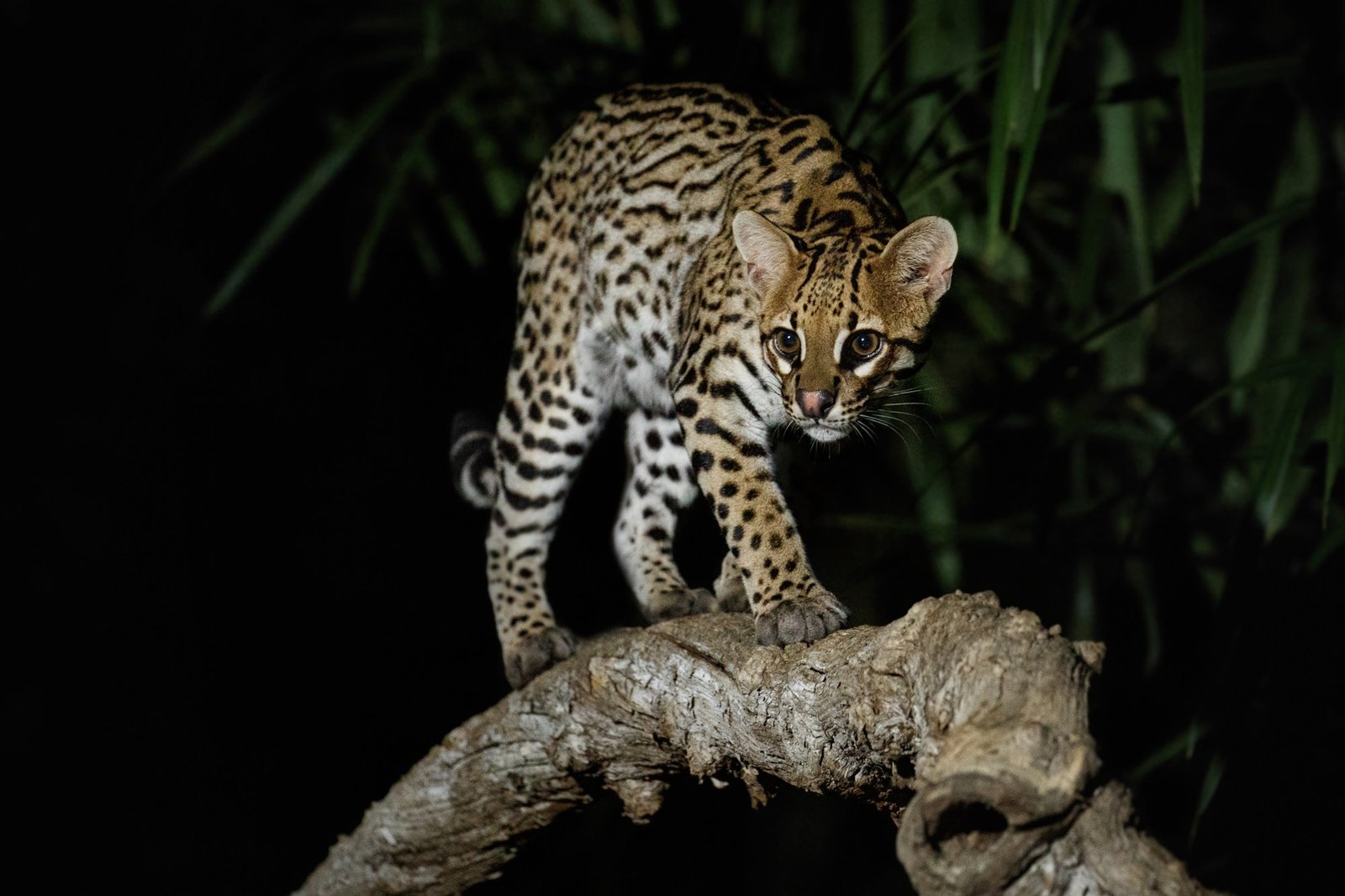
Introduction
The Ocelot (Leopardus pardalis) is a medium-sized wild cat native to the Americas. It belongs to the Felidae family and is closely related to other small wild cats such as the Margay and the Bobcat. Known for its distinctive appearance and remarkable adaptability, the Ocelot is a fascinating species that plays a crucial role in maintaining the ecological balance of its habitats.
Physical Characteristics:
Ocelots have a striking coat pattern characterized by a sleek, tawny fur with dark markings. Their distinctive features include a series of dark spots and stripes covering the body, tail, and limbs, providing effective camouflage in their natural habitats. The coat coloration may vary from shades of yellow to reddish-brown, with some individuals exhibiting a more grayish hue. The fur is soft and dense, reflecting the adaptability of the species to a range of environments.
Ocelots typically have a robust build with a slender body, short legs, and a relatively long tail. Their ears are distinctive, being relatively large and rounded, and often have a white spot on the back. The average weight of an adult Ocelot ranges from 8 to 18 kilograms, with males being slightly larger than females.
Habitat and Distribution:
Ocelots are found in a variety of habitats, including tropical rainforests, grasslands, mangrove swamps, and thorn scrub. They are highly adaptable and can thrive in both arid and humid
- The ocelot (Leopardus pardalis) is a small to medium-sized wild cat native to the Americas.
- Known for its distinctive appearance, the ocelot has a beautifully spotted coat. short tail, and distinctive facial markings.
- Ocelots are highly adaptable and can be found in various habitats, including rainforests, grasslands, and scrublands.
- Their diet primarily consists of small mammals. birds, and reptiles, showcasing their skill as agile and proficient hunters.
- Ocelots face threats such as habitat loss and illegal wildlife trade, contributing to their classification as near-threatened in some regions.

